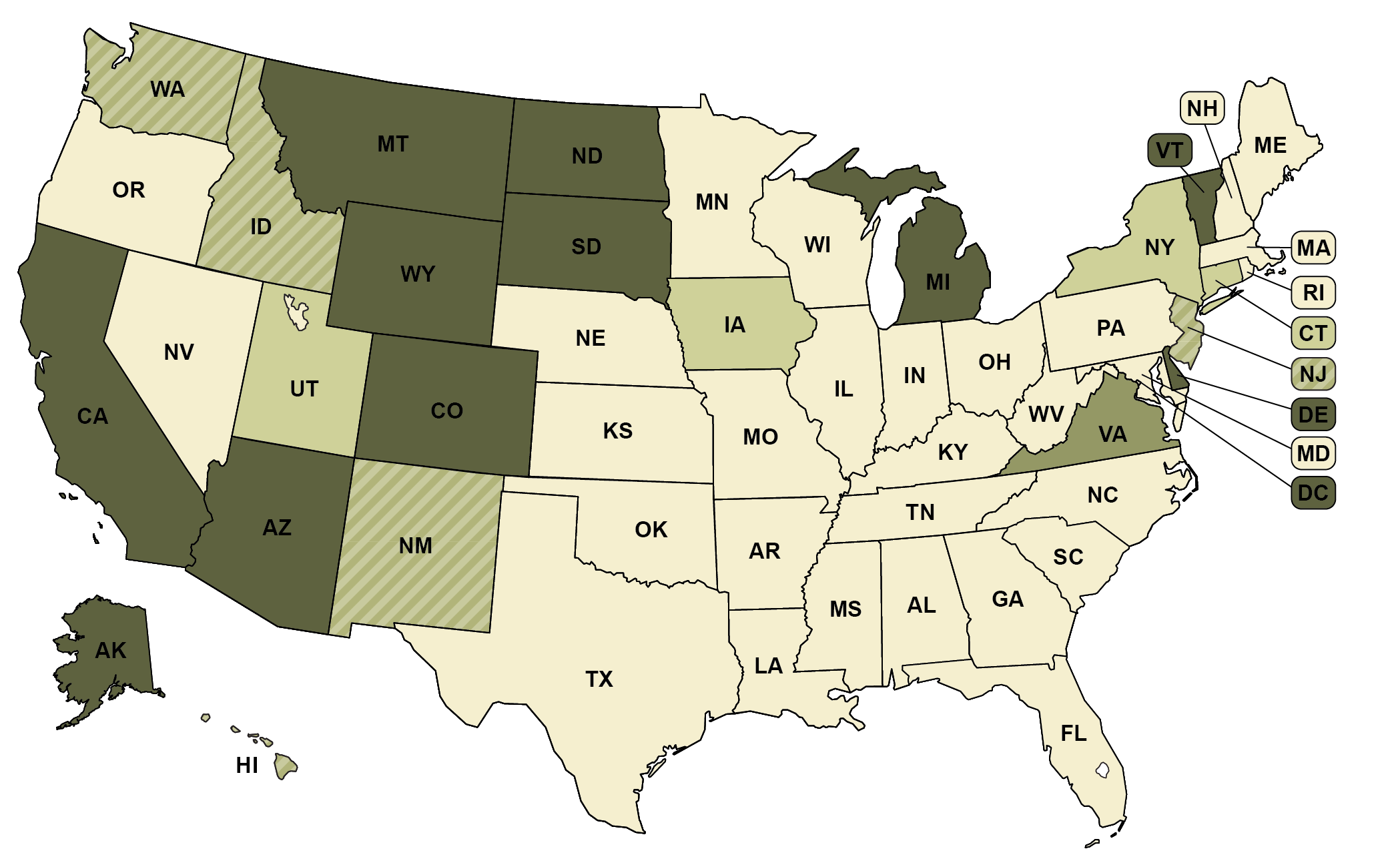The increasing prevalence of partisan gerrymandering has led to a landscape of legislative maps where many lawmakers choose their voters, rather than the voter choosing their lawmaker as intended. Some states have enacted policies to prevent gerrymandering by requiring legislative maps to be drawn by independent commissions rather than the legislatures themselves. This map tracks policies that govern congressional redistricting processes within the states.
-
State has an independent commission for congressional redistricting process
(11 states + D.C.)
-
State has a hybrid citizen/legislative commission for congressional redistricting process
(1 state)
-
State has a political appointee commission for congressional redistricting process
(5 states)
-
State has an advisory commission for congressional redistricting process
(4 states)
-
State legislature draws congressional maps
(29 states)
Recommended citation: Movement Advancement Project. "Independence of State Congressional Redistricting Process." https://www.mapresearch.org/democracy-maps/state_congressional_redistricting_process. Accessed [day of access]
Breakdown by Population
*Note: These percentages reflect the voting-eligible population, as reported by the United States Election Project.
20 % of voting-eligible population lives in states that have an independent commission for congressional redistricting process
3 % of voting-eligible population lives in states that have a hybrid citizen/legislative commission for congressional redistricting process
7 % of voting-eligible population lives in states that have a political appointee commission for congressional redistricting process
9 % of voting-eligible population lives in states that have an advisory commission for congressional redistricting process
62 % of voting-eligible population lives in states which its legislature draws congressional maps


